11 min to read
The pool cover industry represents a significant segment of the swimming pool market, yet many companies in this space underutilize modern digital marketing techniques to capture customers actively searching for their solutions. Whether specializing in automatic safety covers, mesh options, or energy-efficient thermal systems, pool cover manufacturers and dealers must adopt comprehensive digital strategies to compete effectively in today's online-driven marketplace. This article explores proven digital marketing approaches used by leading companies like Meyco, Coverstar, LOOP-LOC, and others, combined with industry best practices to help pool cover businesses maximize their online presence and generate qualified leads.
Understanding the Pool Cover Buyer Journey
Before implementing specific marketing tactics, successful pool cover companies must understand how their customers search for and evaluate cover solutions. Pool owners typically progress through distinct phases: awareness of their need for a cover, research into available options, comparison of competitors, and final purchasing decision. Digital marketing strategies must address each stage effectively.
- Awareness Phase: Potential customers often begin their journey with general questions like "Do I need a pool cover?" or "What are the best pool covers?" Companies like LOOP-LOC have built brand recognition through memorable campaigns—their famous "Bubbles the Elephant" advertising emphasized safety while creating awareness about mesh pool covers strong enough to support substantial weight. This demonstrates how compelling messaging around unique value propositions can drive initial awareness.
- Consideration Phase: Customers researching specific solutions search for terms like "automatic pool covers," "safety mesh covers," or "pool cover options." This is where detailed content marketing and SEO optimization become crucial. Latham Pool Products, for example, dedicates website sections to explaining cover color options, fabric materials, and track systems, helping prospects understand technical differences between products.
- Decision Phase: When ready to purchase, customers search for "pool covers near me," specific brand names, or dealer locations. Local search optimization and targeted paid advertising are critical here to capture high-intent buyers.
Search Engine Optimization (SEO) for Pool Cover Companies
Keyword Research and Targeting
Pool cover companies should identify keywords across multiple intent categories. Research shows that effective keywords for the industry include both broad terms ("best pool covers," "automatic pool covers") and high-intent phrases ("pool cover installation," "safety covers for inground pools," "winter pool covers [city name]"). The most valuable keywords often include location modifiers, as pool covers are typically sold through local dealers and installers.
Companies like GLI Pool Products and Integra Pool Covers operate through networks of hundreds of distributors and retailers, making local SEO particularly important for visibility. Each distributor benefits from location-specific SEO optimization targeting their service area.
On-Page Optimization
Successful pool cover companies structure their websites to capture search engine attention while providing genuine value to visitors. Title tags should incorporate primary keywords—for example, "Automatic Pool Covers | Coverstar" clearly communicates what the page offers. Meta descriptions should differentiate the company by highlighting unique selling points: "20-year warranty automatic pool covers with stainless steel components—industry-leading reliability."
Header tags (H1, H2, H3) organize content hierarchically and provide additional keyword opportunities. A page might use "Automatic Safety Covers for Any Pool Shape" as an H1, followed by H2 sections like "Mesh Safety Covers," "Solid Safety Covers," and "Custom Color Options."
Content Quality and Depth
The most successful pool cover websites provide comprehensive, informative content that establishes authority and answers customer questions. Aquamatic Cover Systems, for instance, publishes detailed information about their Hydramatic hydraulic systems, Lift Lid designs, and multiple cover options—content that ranks for both generic and specific searches. Their explanation of why hydraulic systems eliminate electricity from poolside safety concerns directly addresses customer pain points.
Similarly, Robelle's detailed product pages explaining the differences between their Ultra Mesh Safety Cover (keeping 95% of sunlight out), Commercial Mesh Safety Cover, and Industrial Mesh Safety Cover (99% light blocking) help customers make informed decisions while providing SEO value through comprehensive keyword coverage.
Blog content represents another crucial SEO opportunity. Topics like "Pool Cover Maintenance Tips," "How to Choose Between Mesh and Solid Covers," "Energy Savings from Pool Covers," and "Pool Safety Standards Explained" attract organic traffic while positioning companies as industry experts.
Pay-Per-Click (PPC) Advertising Strategies
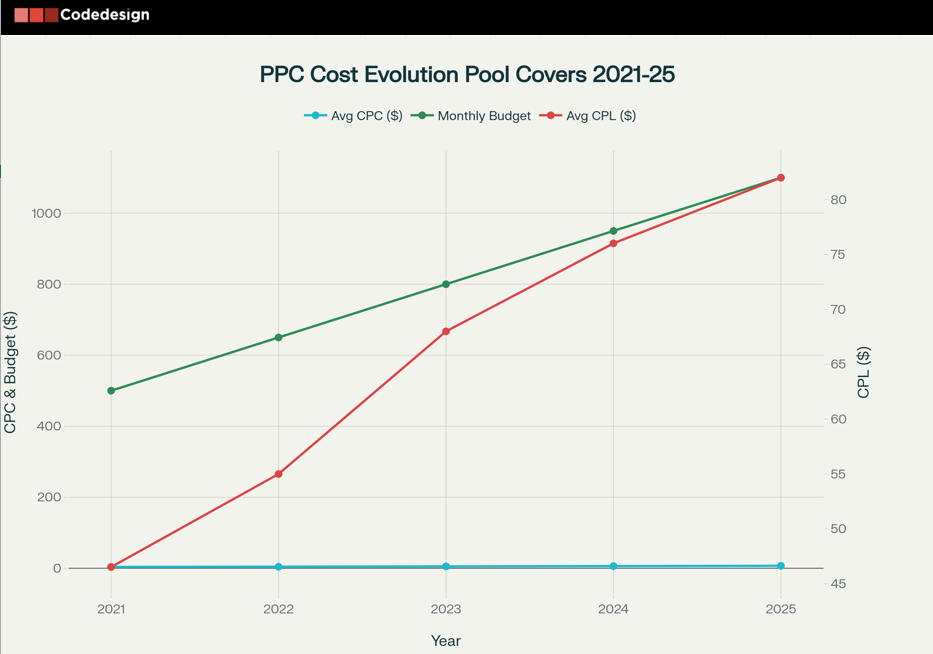
Google Search Ads for Intent-Driven Campaigns
Pool cover companies operating in competitive markets often use Google Ads to capture high-intent search traffic. The most effective campaigns target specific buyer keywords combined with geographic modifiers. For national manufacturers and dealers, campaigns typically organize ad groups by:
- Service area (e.g., "pool covers in Boston," "automatic covers near Houston")
- Product type (automatic covers, mesh covers, solid covers, solar covers)
- Customer intent (installation, repair, purchase)
- Seasonal needs (summer opening, winter closing, maintenance)
The pool industry follows predictable seasonal patterns, making seasonal bid adjustments critical. Winter months see increased demand for safety and winter covers, while summer drives interest in solar covers and maintenance products. Research indicates that effective bid strategies increase bids 20-50% during peak seasons to capture maximum visibility when customer intent peaks.
Alta Enterprises, specializing in commercial pool covers with claims of 50%-70% energy savings, would structure ads highlighting ROI-focused messaging: "Commercial Pool Covers | Save $5K-$7K Annually on Chemicals | Get Your Free ROI Calculator." Their unique value proposition (fully welded thermal covers, automatic reel systems) becomes clear immediately.
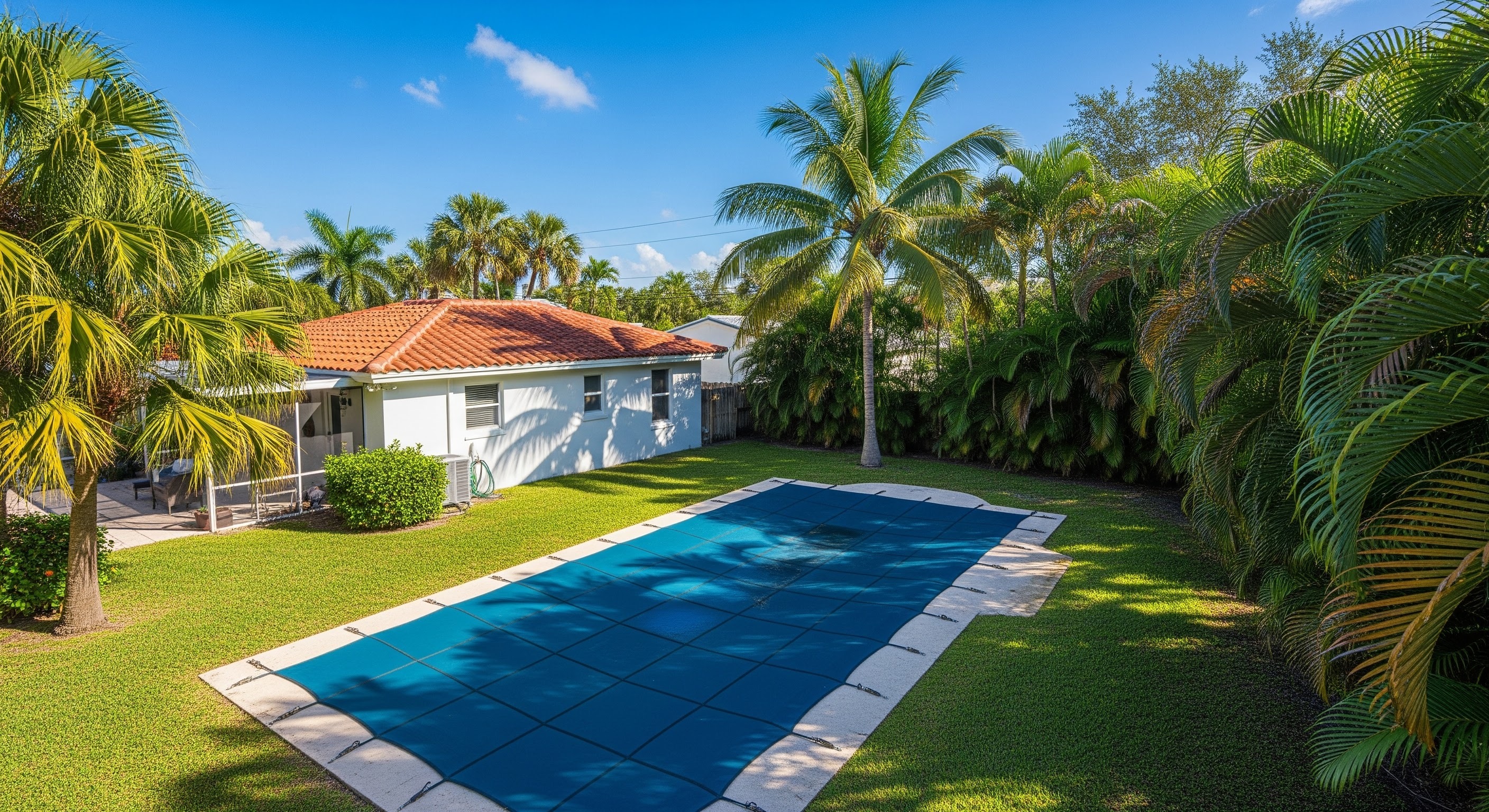
Landing Page Optimization
PPC success depends heavily on landing page quality. Rather than sending all traffic to generic homepage, successful campaigns direct users to purpose-built landing pages matching ad intent. For example:
- Users clicking "automatic pool covers" ads land on pages showcasing automatic cover models with clear differentiation
- Visitors clicking "pool cover safety" ads reach pages emphasizing ASTM certifications and safety features
- Prospects seeking "pool cover installation" visit pages with service area coverage, installer credentials, and consultation booking forms
Landing pages should load quickly (mobile optimization is essential), clearly communicate the value proposition, include customer testimonials or case studies, and feature prominent calls-to-action. Pool Safety USA's website, for instance, emphasizes their expertise with messaging like "Founded 2012 by a Certified Pool Operator" to build credibility quickly.
Local Service Ads (LSA)
For companies offering installation and service in specific areas, Google Local Service Ads represent a high-performing PPC option. These ads appear above regular search results and require Google Guarantee certification. Research shows LSA campaigns for pool services achieve lower cost-per-click than traditional PPC while generating higher-quality leads.
Social Media Marketing for Pool Cover Brands
Platform Selection and Strategy
Pool cover companies should focus primarily on platforms where target audiences spend time: Facebook, Instagram, YouTube, and Pinterest. Each platform serves distinct purposes within an integrated strategy.

Facebook and Instagram Marketing
Facebook and Instagram excel for visual storytelling and targeted advertising. Pool cover companies should post regular content showcasing:
- Completed installations with before/after photos
- Customer testimonials and success stories
- Educational content about pool maintenance and cover benefits
- Seasonal promotions and new product launches
- How-to videos demonstrating cover installation or operation
Effective posting frequency balances consistency with sustainability—typically 3-4 posts weekly proves manageable and maintains algorithm visibility without overwhelming audiences. Timing matters significantly; posts during evening hours and weekends when homeowners browse social media generate higher engagement than business-hour posting.
Hashtag strategy should combine industry-standard tags (#PoolCovers, #PoolSafety, #OutdoorLiving) with branded tags (#MeycoCovers, #CoverstarAutomatic) and location tags to increase discoverability. Research indicates that using 5-15 relevant hashtags maximizes reach without appearing spammy.
Facebook Advertising
Social media advertising allows precise targeting of pool owners and homeowners in peak buying seasons. Facebook's targeting options enable campaigns to reach:
- Homeowners aged 35-65 who have expressed interest in pool products
- Users who recently searched for pool-related terms
- Customers who engaged with competitor content
- Previous website visitors (retargeting)
Successful creative typically showcases real pool installations with compelling headlines addressing customer pain points. For example:
- "Finally Sleep Peacefully: ASTM-Certified Safety Covers Prevent Accidental Entry"
- "Save 50-70% on Energy Bills with Thermal Pool Covers"
- "One-Button Pool Protection: Automatic Covers in Seconds"
Budget allocation often follows an 70/20/10 split: 70% to proven, top-performing ads; 20% to promising new variations; 10% experimental budget testing new audiences or creative formats.
YouTube Content Strategy
Video represents the most engaging format for pool cover marketing. YouTube channels should feature:
- Installation tutorials demonstrating how covers work (covering/uncovering process, safety features, maintenance)
- Product comparisons exploring mesh vs. solid covers, automatic vs. manual options
- Customer testimonials showing real homeowners discussing their cover benefits
- Pool maintenance tips establishing the company as an industry authority
- Virtual tours of completed installations or dealer showrooms
Aquamatic's approach of publishing detailed product videos explaining their Hydramatic hydraulic system and EZ Cover options demonstrates how educational video content captures viewers interested in specific solutions.
Content Marketing and Thought Leadership
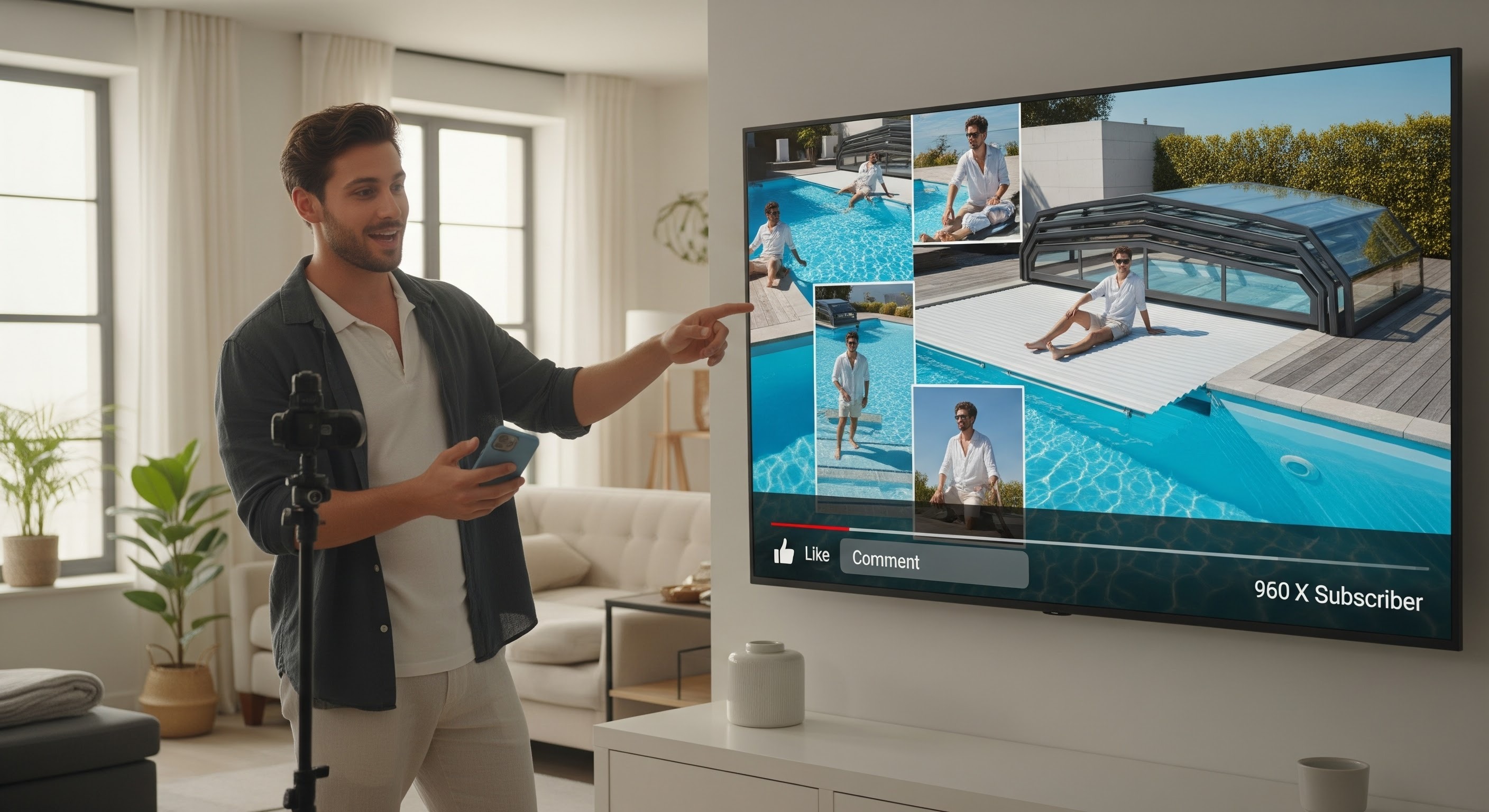
Blog Strategy
A well-maintained blog serves multiple purposes: improving SEO rankings, providing valuable information to prospects, and establishing authority. Pool cover company blogs should publish content addressing common questions and pain points:
- "Complete Guide to Pool Safety Covers: ASTM Standards Explained"
- "Mesh vs. Solid Pool Covers: Which is Right for Your Pool?"
- "How Automatic Pool Covers Save Money on Energy and Chemicals"
- "Pool Cover Installation: What Homeowners Need to Know"
- "Seasonal Pool Care: Winter and Summer Cover Strategies"
- "Commercial vs. Residential Pool Covers: Key Differences"
Content should be published consistently (ideally 2-4 posts monthly) and optimized for target keywords while genuinely answering reader questions. The most effective posts combine:
- Accurate, detailed information addressing the topic comprehensively
- Relevant keywords integrated naturally (avoiding keyword stuffing)
- Visual elements (images, infographics, diagrams) breaking up text
- Calls-to-action guiding readers to next steps (contact forms, product pages)
- Internal links connecting related content and supporting overall site structure
Case Studies and Testimonials
Prospects evaluating pool cover options benefit immensely from real-world examples. Detailed case studies showcase specific projects, highlighting challenges, solutions implemented, and measurable results. For example:
"Commercial Aquatic Facility Case Study: How Automated Thermal Covers Reduced Operating Costs by $45,000 Annually"
Such case studies might detail:
- The facility's initial challenges (excessive evaporation, high chemical/energy costs)
- The cover solution implemented (specific Alta Enterprises thermal cover and automatic reel system)
- Installation process and timeline
- Quantified results (energy savings, chemical reduction, maintenance time saved)
- Long-term ROI calculations
Collecting and showcasing customer testimonials builds credibility powerfully. Video testimonials prove especially effective, allowing customers to speak directly about their experience with authenticity that written text cannot match.
Email Marketing for Pool Cover Companies
Building Subscriber Lists
Successful email campaigns begin with substantial, permission-based subscriber lists. Pool cover companies should implement multiple list-building strategies:
- Website pop-ups offering valuable resources ("Free Pool Cover Buying Guide," "ROI Calculator for Commercial Covers")
- Content upgrades where blog readers exchange email for downloadable resources
- Form submissions on product pages collecting prospect information
- Trade show and event attendee list collection
- Existing customer database segmentation
Segmentation Strategy
Email effectiveness increases significantly with segmentation—grouping subscribers by characteristics and sending tailored messages. Common segments include:
- Geographic: Different messaging for northern climates focused on winter protection versus southern pools emphasizing year-round maintenance
- Product interest: Subscribers interested in automatic covers receive different content than those researching manual options
- Purchase stage: Prospects in early research receive educational content while near-purchasers get product comparisons and testimonials
- Customer type: Residential customers need different messaging than commercial facility managers
- Seasonal: Pre-summer promotions for spring opening covers versus pre-winter messaging for winter cover protection
Email Campaign Types
Effective campaigns include:
- Educational series: Multi-email sequences teaching about pool cover benefits, safety standards, or maintenance practices
- Product launches: Announcing new cover models or features to existing lists
- Seasonal campaigns: Pre-winter and pre-summer messaging matching natural buying cycles
- Promotional offers: Limited-time discounts or bundle deals encouraging purchase decisions
- Re-engagement campaigns: Reaching inactive subscribers with special offers or new content
- Customer retention: Post-purchase messages providing maintenance tips and upsell opportunities
Alta Enterprises' positioning around energy and chemical cost savings would lend itself well to ROI-focused email campaigns, providing customers and prospects with specific cost-benefit analysis tailored to their facility size and usage patterns.
Leveraging Local Search and Directories
Google Business Profile Optimization
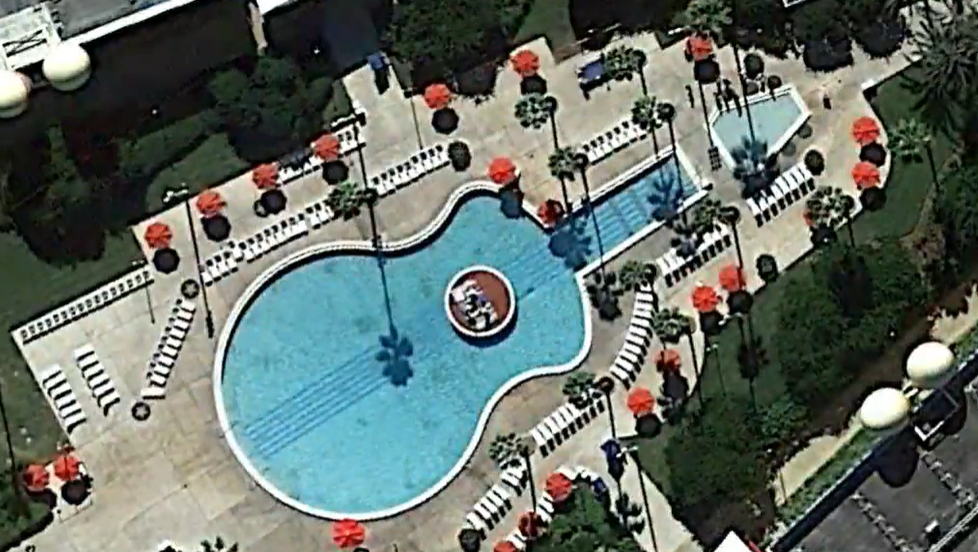
Pool cover dealers and local installers must maintain comprehensive, accurate Google Business Profiles. Optimization includes:
- Complete business information (accurate hours, phone, address)
- High-quality photos showing installed covers and facilities
- Detailed business description incorporating primary keywords
- Regular posts updating customers with promotions or news
- Prompt, professional responses to all customer reviews (positive and negative)
Local Directory Listings
Presence in relevant directories improves local visibility and builds authority signals:
- Swimming pool contractor directories
- Home improvement and outdoor living directories
- Industry association listings (APSP, NSPI)
- Local chamber of commerce listings
Consistent name, address, and phone information across all directories (NAP consistency) signals reliability to search engines and customers.
Review Management
Customer reviews significantly influence purchase decisions. Pool cover companies should:
- Actively encourage satisfied customers to leave reviews on Google, Yelp, and industry-specific platforms
- Respond professionally to all reviews, addressing concerns raised in negative reviews
- Use review insights to identify improvement opportunities
- Highlight positive customer testimonials in marketing materials
Video Marketing Strategy
Types of Video Content
Video content captures attention more effectively than text or static images, particularly on social platforms. Pool cover companies should invest in:
- Product demonstration videos showing how covers install, operate, and provide safety/energy benefits
- Installation guides providing step-by-step walkthroughs for DIY-minded consumers or professional installers
- Customer testimonial videos featuring real users discussing their satisfaction and specific benefits realized
- Educational content explaining pool maintenance, safety standards, or energy conservation
- Behind-the-scenes content showing manufacturing, quality control, or team expertise
- Comparison videos objectively exploring different cover types and when to use each
PoolTree System's approach of demonstrating their self-cleaning support system in action—showing how it holds covers above water and prevents leaf mulching—effectively communicates their unique value proposition through video.
Video Distribution Strategy
Effective video marketing requires strategic distribution across multiple platforms:
- YouTube: Host full-length educational content and tutorials; optimize for search and suggestions
- Social media: Shorter clips (15-60 seconds) tailored to Facebook, Instagram Reels, TikTok formats
- Website: Embed videos on product pages and homepage to increase engagement and reduce bounce rates
- Email campaigns: Include video links in messages to boost click-through rates
- Paid promotion: Boost high-performing videos through platform advertising
Influencer and Partnership Marketing
Collaborating with Complementary Businesses
Pool cover companies operate within the broader swimming pool ecosystem. Strategic partnerships with complementary businesses amplify reach:
- Pool builders and installers (promoting covers to their customers)
- Landscape designers (recommending covers as part of outdoor space solutions)
- Pool cleaning and maintenance companies (selling covers as additional services)
- Home improvement and outdoor living retailers
- Real estate agents and developers (emphasizing cover benefits for luxury properties)
Influencer Partnerships
Micro-influencers in home improvement, outdoor living, and real estate niches can showcase pool covers authentically to engaged audiences. Effective partnerships provide:
- Product samples for influencers to feature in their content
- Compensation or affiliate arrangements for promoting covers
- Co-created content featuring the influencer's perspective and experience
- Authentic endorsements rather than obviously paid advertisements
Measuring Performance and Optimizing Campaigns
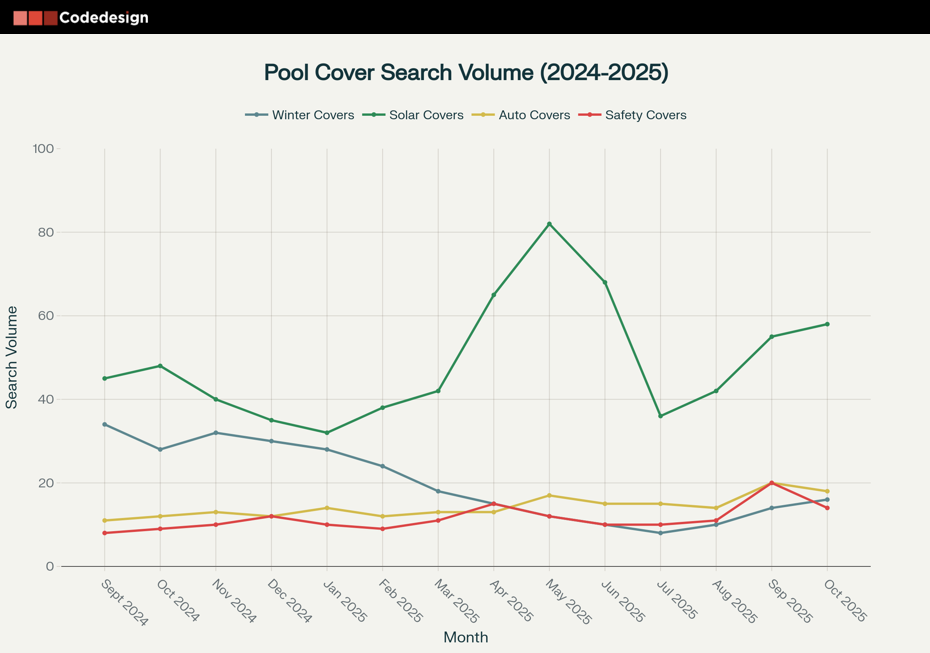
Key Performance Indicators (KPIs)
Successful digital marketing requires defining and tracking relevant metrics:
- Website traffic: Total visitors, traffic sources, page views
- Lead generation: Form submissions, phone calls, email inquiries (tracked through UTM parameters, phone tracking, conversion pixels)
- Conversion rate: Percentage of visitors taking desired actions
- Cost per lead: Total marketing spend divided by leads generated
- Customer acquisition cost (CAC): Total acquisition expense divided by new customers
- Return on ad spend (ROAS): Revenue generated divided by advertising costs
- Search rankings: Positions for target keywords (improving rankings indicate SEO progress)
- Social engagement: Likes, comments, shares, follower growth
Attribution and Analytics
Understanding which marketing channels drive actual revenue is essential. Implement comprehensive tracking:
- Google Analytics tracking website visitor behavior and conversion paths
- Google Ads conversion tracking attributing leads to specific campaigns and keywords
- Social media pixel tracking identifying conversions from social advertising
- CRM system integration documenting which leads convert to customers
- UTM parameter implementation distinguishing marketing channel performance
Seasonal Optimization Strategies
The pool cover market exhibits clear seasonal patterns requiring strategic adaptation:
Spring (March-May): Focus on pool opening and spring maintenance. Campaigns emphasize:
- Spring pool cleaning and maintenance
- Summer safety cover options
- Seasonal promotions for opening supplies
- Educational content about spring pool preparation
Summer (June-August): Peak pool season sees lower cover-related purchases but opportunity for:
- Solar cover promotions for energy savings
- Educational content about summer maintenance
- Dealer/retail promotion and inventory management
- Preparation for fall closing season
Fall (September-November): Building demand for winter cover preparation:
- Winter safety cover promotions
- "Pool closing" campaign messaging
- Seasonal bid increases in PPC campaigns
- Email campaigns to previous fall customers
Winter (December-February): Highest demand for winter covers and maintenance:
- Maximum advertising investment and bid levels
- Winter cover installation promotion
- Cold-weather maintenance tips
- Holiday promotions and bundle offers
Emerging Digital Channels and Innovations
Visibility in Large Language Models (LLMs)
As AI language models become primary information sources for consumers, pool cover companies must optimize content for LLM visibility. Strategies include:
- Creating comprehensive, authoritative content on pool covers, safety, and benefits
- Addressing common questions and pain points thoroughly
- Using clear, accessible language that AI models readily incorporate
- Building backlinks from authoritative sources to improve content authority
Voice Search Optimization
Smart speaker adoption increases voice search queries. Optimize for conversational keywords:
- "What's the best pool cover for above ground pools?"
- "How much do automatic pool covers cost?"
- "Which pool covers prevent algae?"
Chatbot and AI Customer Service
Implementing AI-powered chatbots on websites provides instant customer support, captures visitor information, and qualifies leads 24/7. Effective chatbots answer:
- "Which pool cover is right for my pool type?"
- "How much does installation cost?"
- "What are the warranty terms?"
Competitive Analysis and Market Positioning
Researching Competitor Strategies
Understanding competitor digital marketing efforts informs positioning decisions. Analyze:
- Website structure and SEO optimization: What keywords do competitors target? What content do they publish?
- Paid advertising: What campaigns are competitors running? What messaging resonates?
- Social media presence: Which platforms do competitors prioritize? What content performs well?
- Content marketing: What topics do competitors address? What gaps exist?
- Reviews and reputation: How do customers perceive competitors? What complaints appear repeatedly?
Differentiation Strategies

Pool cover companies should identify and emphasize unique competitive advantages. Examples from leading companies include:
- LOOP-LOC's "elephant-strength" positioning emphasizing unmatched durability
- Alta Enterprises' focus on energy and chemical cost savings through thermal technology
- Aquamatic's 20-year warranty and hydraulic system reliability
- PoolTree's innovation in self-cleaning support systems for above-ground pools
Integration with Sales and Customer Service
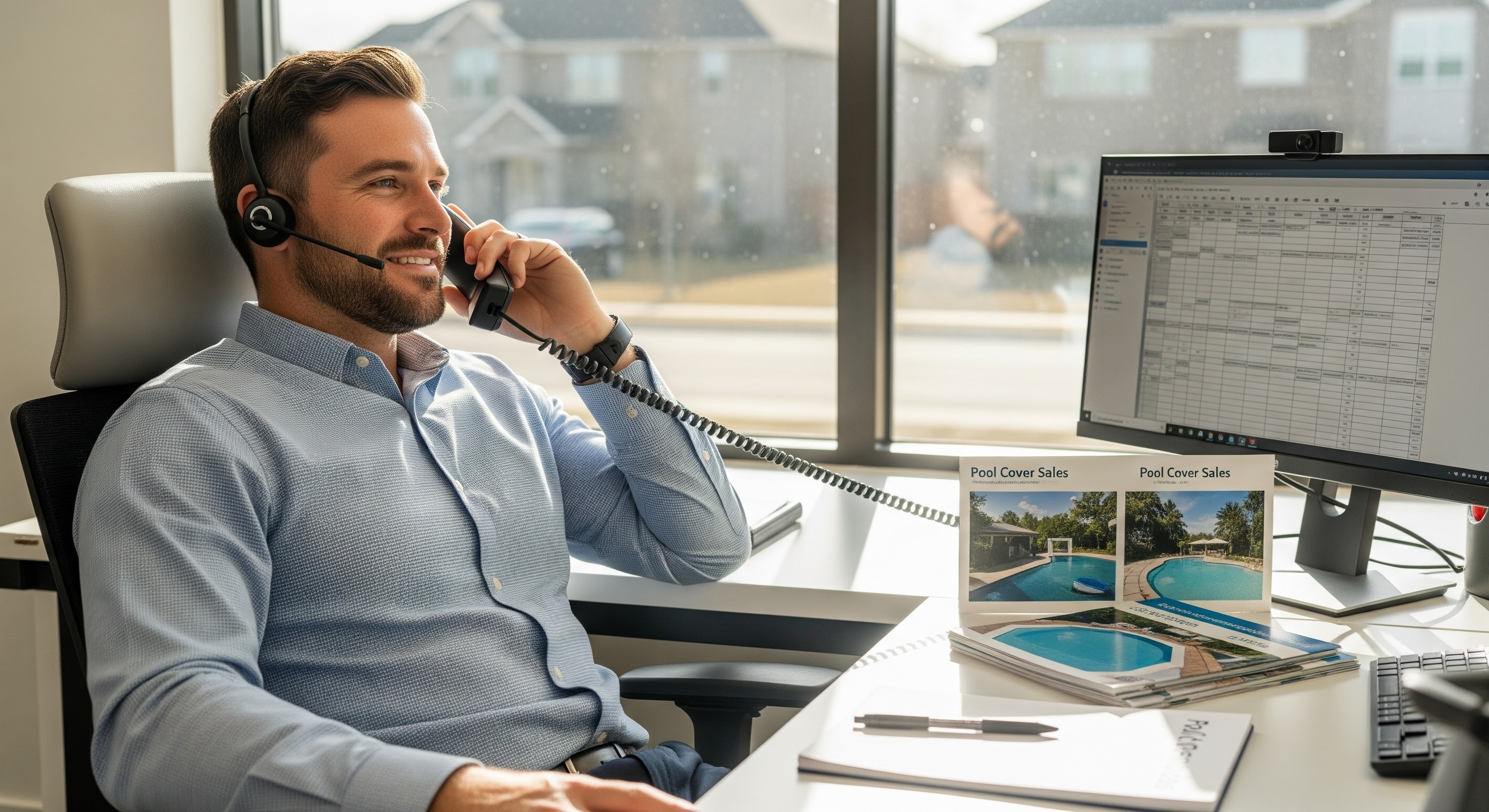
Aligning Marketing with Sales
Digital marketing effectiveness increases dramatically when aligned with sales processes:
- Marketing generates qualified leads meeting agreed-upon criteria
- Sales teams follow consistent processes for lead qualification and nurturing
- Feedback from sales informs marketing strategy and messaging adjustments
- CRM systems track interactions and facilitate hand-off between teams
Customer Retention and Lifetime Value
Acquiring new customers costs significantly more than retaining existing ones. Pool cover companies should:
- Implement post-purchase communication maintaining customer relationships
- Provide ongoing value through maintenance tips and best practices
- Offer premium services or products to existing customers
- Encourage customer referrals through referral programs or incentives
- Gather testimonials and case studies from satisfied customers for marketing use
Digital marketing for pool cover companies requires integrated strategies addressing each stage of the buyer journey. Leading companies like Meyco, Coverstar, LOOP-LOC, Aquamatic, and others demonstrate how combining SEO, PPC advertising, social media marketing, content development, email campaigns, and local search optimization creates powerful customer acquisition engines.
Success demands consistent execution, data-driven optimization, and adaptation to evolving customer behaviors and platform algorithms. Pool cover companies investing in comprehensive digital strategies position themselves to capture growing segments of the pool cover market, establish strong brand recognition, and generate sustainable growth in an increasingly digital marketplace.
By implementing these strategies systematically and measuring results rigorously, pool cover businesses of any size can achieve online visibility matching or exceeding their larger competitors, attract qualified leads actively seeking their solutions, and ultimately convert greater percentages of website visitors into paying customers.
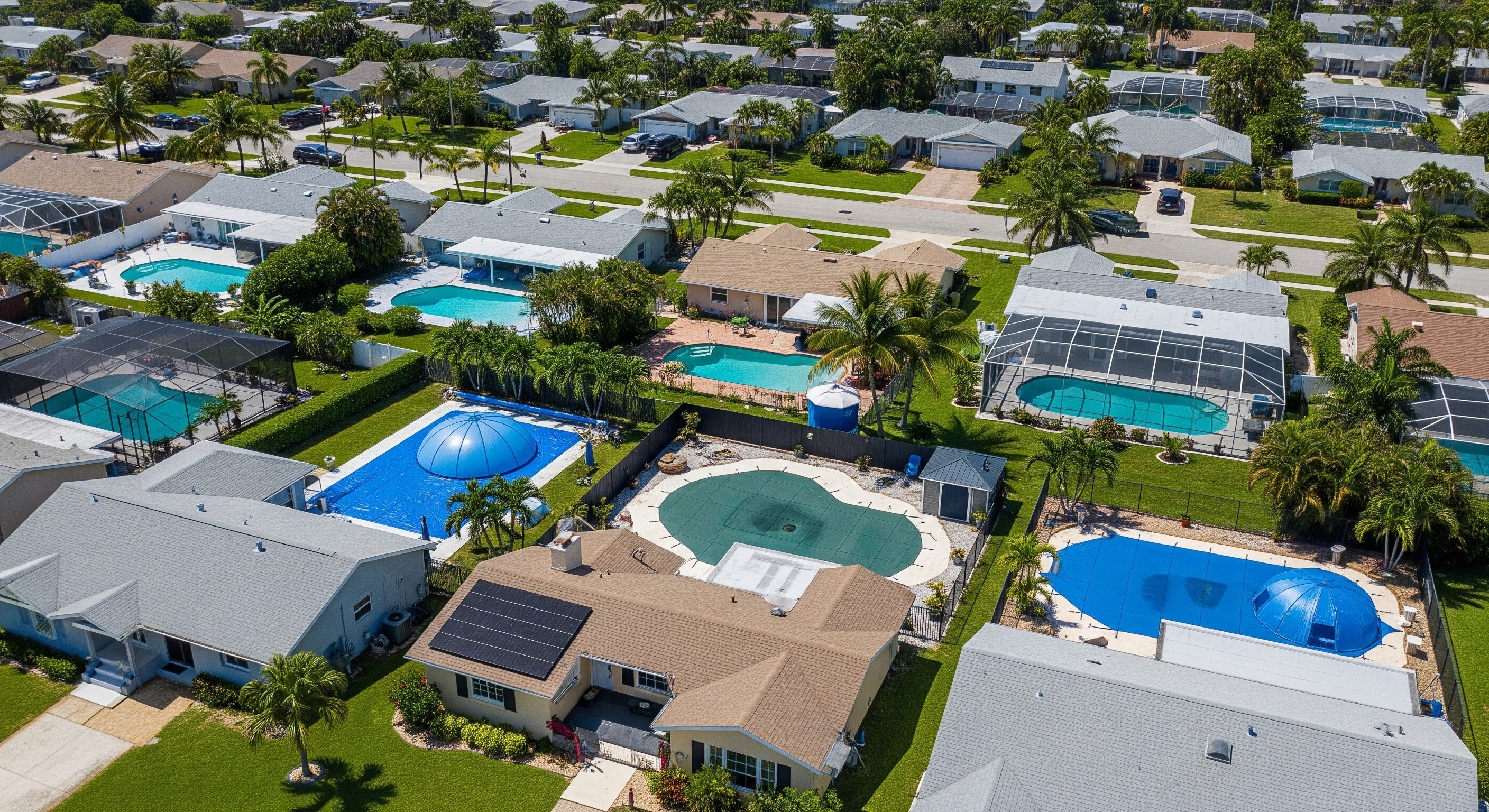
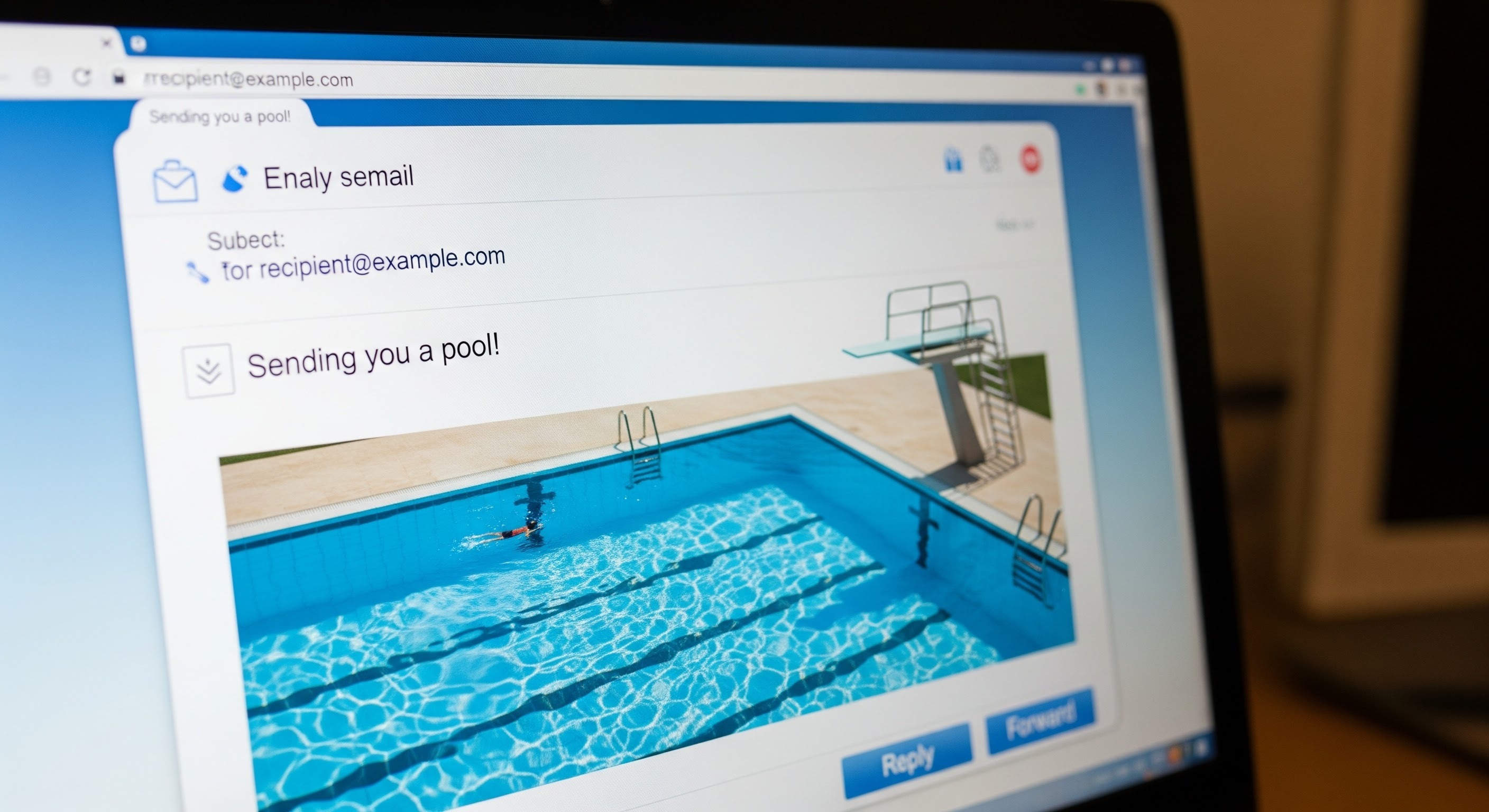
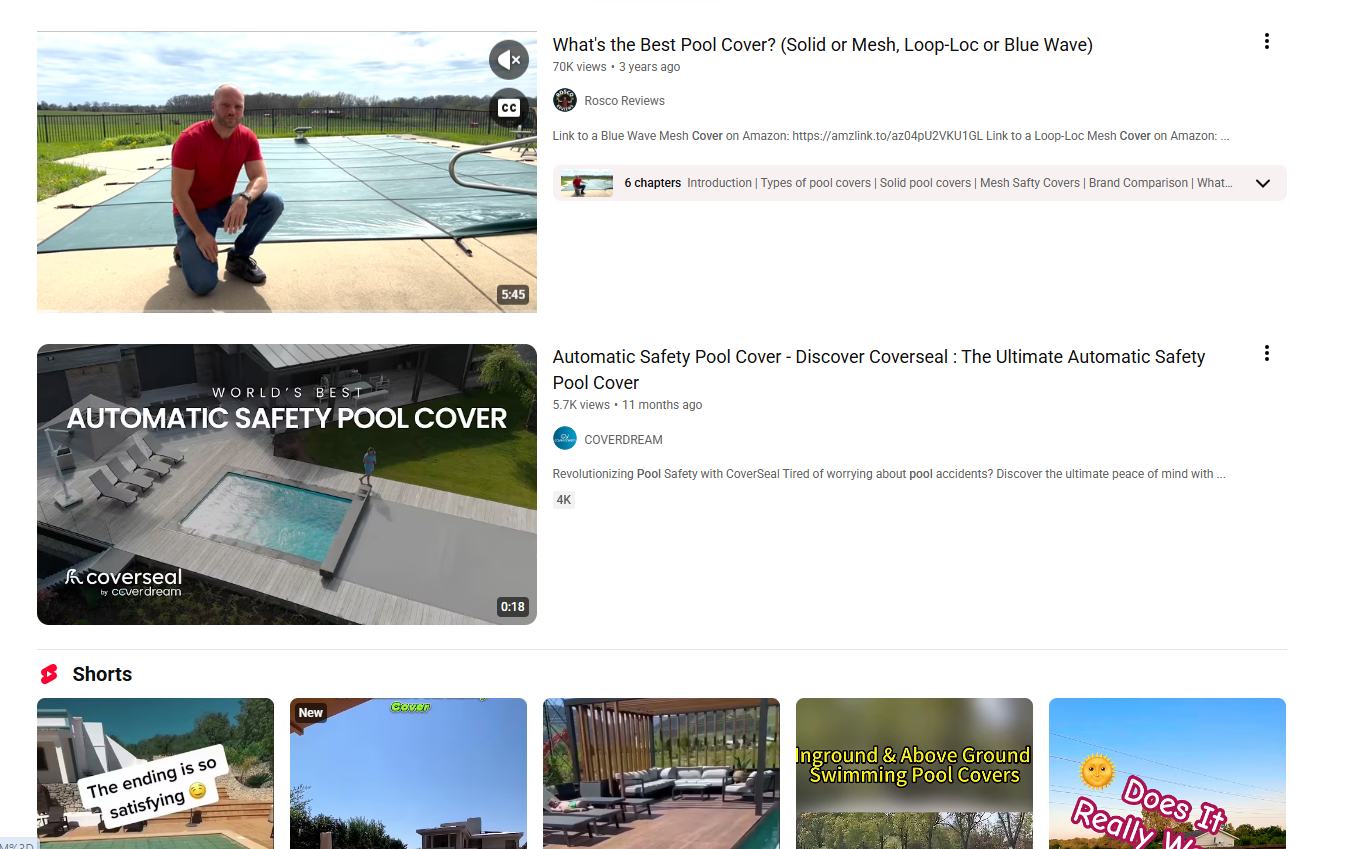




Add comment ×